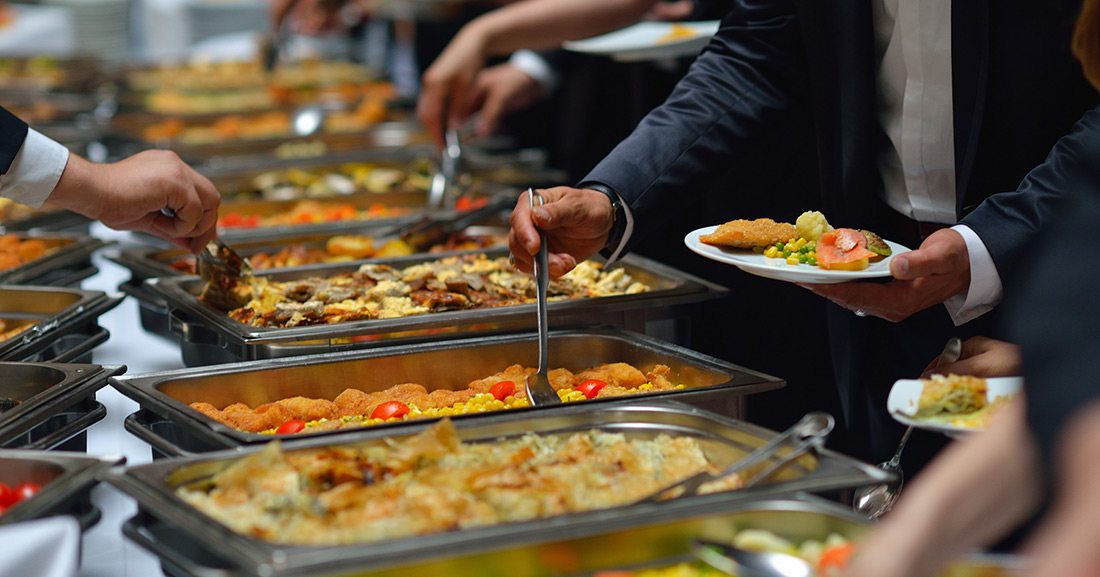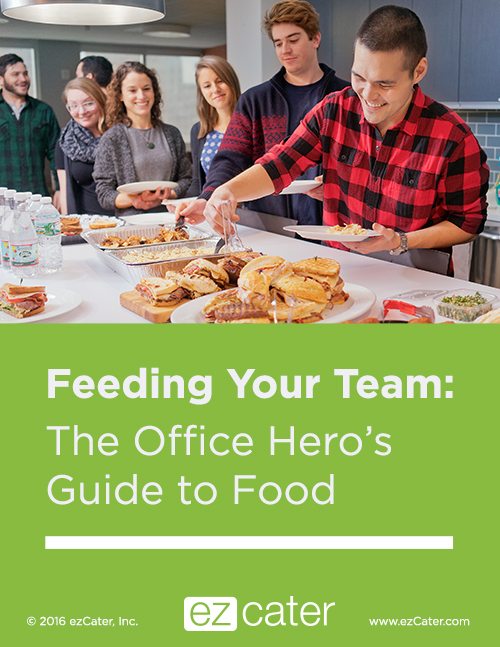Deadlines. We all have them, and sometimes we need to get creative in order to meet them.
But when sacrificing a much-needed midday break is on the table, you may hear some grumbling from your team. There are all sorts of science-backed reasons to take breaks. Taking a break helps your brain retain information. It gives you time to reevaluate your goals. It may even make you a better employee. Regardless, we’ve all been in a situation where sacrificing a bit of free time helps the team make a lot of progress or meet an important deadline. That’s where working lunches come in.
When a working lunch is your best option, how do you get your team on board and make sure that it’s time well spent? Here are some things to consider as you start planning.

Order great food
If there’s only one built-in incentive to working straight through lunch hour, it has to be the food. “Hangry” employees are unproductive employees, so make sure there’s enough to go around and that you’ve ordered food that accommodates everyone’s dietary restrictions and tastes. If you’re unsure what those preferences are, ask—don’t guess. You’re already asking the team to give up time that they might have spent recharging or working on another project. If the food you order feels like a treat, that softens the blow a bit.
If your company orders food regularly, consider increasing your budget a bit for the working lunch or ordering a favorite that you don’t get often. It goes without saying that if you’re asking teammates to give up their free time, you or your company should pick up the bill.

Be your office’s hero. Download our guide to ordering catering for your office.
Create a detailed schedule
As you plan your working lunch, be mindful of the fact that everyone would probably rather be doing something else. To show everyone involved that you value their free time, plot out the talking points that you’ll cover during the meeting. Send this to the team a day before the working lunch so they can prepare themselves for anything they may need to contribute.
Sending around a schedule also sets expectations for the working lunch and gives participants an idea of how long it will last. Preparing in this way will also help you stay on target and ensure that every point is covered. If it feels like a waste of time, people will be less likely to be on board for your next lunch session.
Working lunches aren’t all work
Of course, the primary reason for organizing a working lunch is to get stuff done. You’re eking out time wherever you can to accomplish great things. But that doesn’t negate the social benefits of eating lunch with your colleagues. If the topic of conversation occasionally wanders into personal territory, that’s OK. Participants may be inclined to set a more casual tone, which can mean you’re ultimately more relaxed and creative as a group. As the lunch organizer, it’s your job to make sure the meeting gets back on track. Let people form social bonds—it paves the way for more efficient collaborations and beneficial relationships down the road.
As the meeting organizer, you might break the ice by talking about non-work related topics. Ask them how their weekends have gone, what they think of the latest summer blockbuster, or where they’re planning to go on vacation this year. In other words, treat this opportunity just as much as a lunch break with your employees as it is a business meeting.
Wrapping it up
A working lunch should help you organize your team’s project goals. But it’s also an opportunity for you to reach out to your employees and show them that you care about the work they put into the business. The gestures are simple: excellent food, productive conversation, and a sense of genuine appreciation. A little work goes a long way.
How do you do working lunches? Let us know in the comments below.







